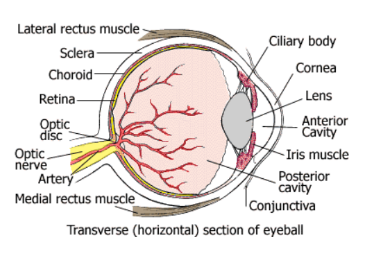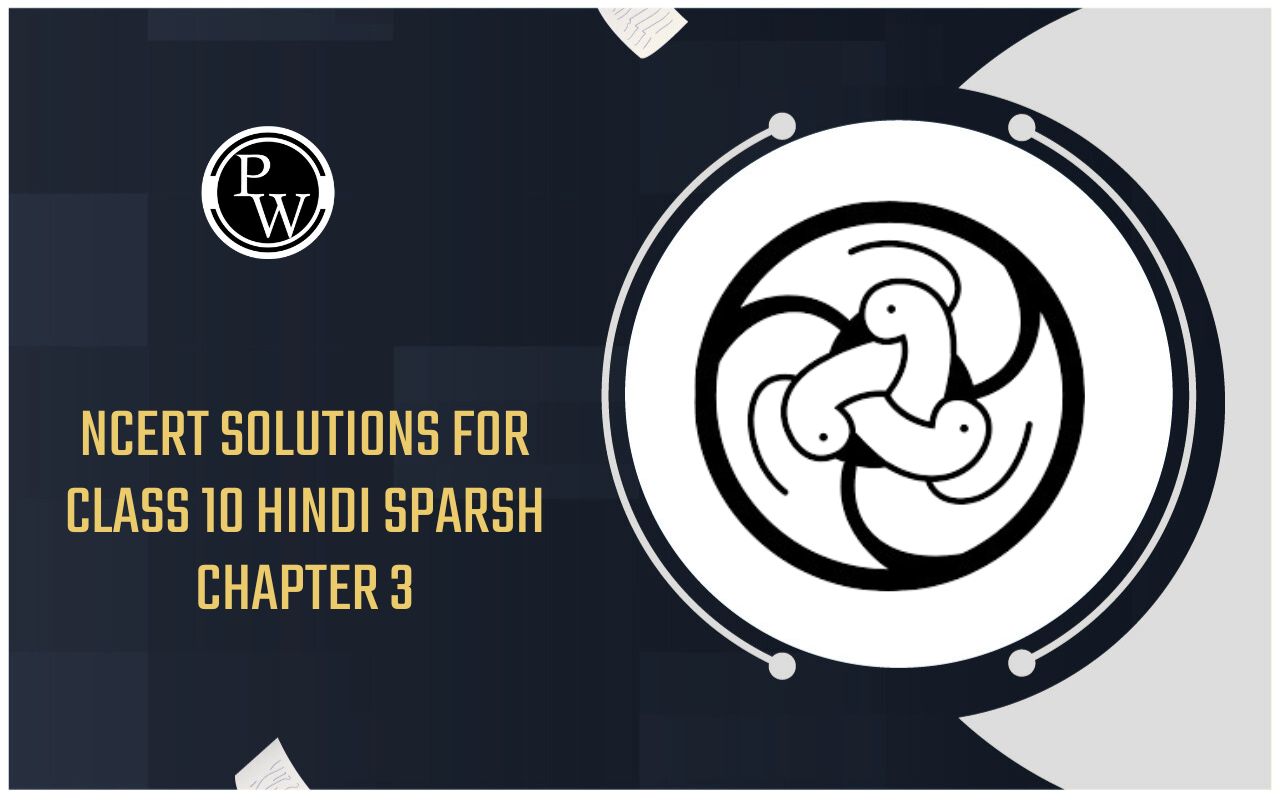
CBSE Class 10 Science Notes Chapter 11: In the class 10 Science chapter, The Human Eye and the Colourful World, students examine how these ideas relate to the human eye using their knowledge of light and some of its properties from the other chapters. Several optical phenomena are also studied by the students. This chapter also looks at the nature of rainbows and how they form, how white light splits, and why the sky is blue.
CBSE Class 10 Science Notes Chapter 11 Overview
This chapter focuses on the functioning of the human eye and how they assist us in our daily lives. Students must make the most of this time to examine the material thoroughly. These key questions will assist students in improving their revisions and reevaluating the majority of the chapter's content. Students must understand the key questions that are likely to appear in the exams.CBSE Class 10 Science Notes Chapter 11 PDF
Students can get free CBSE Solutions (NCERT) and other study materials from the website here. To help you review the entire syllabus and get better grades in your exams, you can download the Class 10 Science NCERT Solutions.CBSE Class 10 Science Notes Chapter 11 PDF
CBSE Class 10 Science Notes Chapter 11
Below we have provided CBSE Class 10 Science Notes Chapter 11 for the ease of the students so that they can prepare better for their exams - The human eye is the most important sense organ since it allows us to perceive the vibrant, lovely world around us. The average diameter of the spherical eye is 2.3 centimetres. The cornea, iris, pupil, lens, ciliary muscles, retina, nerve cells, optic nerve, yellow spot, aqueous and vitreous humour, and suspensory ligament are all parts of the internal structure of the eye. The retina is a light-sensitive screen on which an image is formed by the lens system of the human eye. The thin membrane of the eye that allows light to enter is called the cornea. The cornea's outer surface is where the majority of light refraction takes place. Behind the cornea lies a black, muscled diaphragm called the Iris that regulates pupil size.
The part of the eye called the pupil manages and regulates the quantity of light that enters the eye. When exposed to light, the light-sensitive cells are activated and produce electrical signals. The optic nerves carry these messages to the brain. After analysing these signals, the brain analyses the data to enable us to perceive objects as they are.
The retina is a light-sensitive screen on which an image is formed by the lens system of the human eye. The thin membrane of the eye that allows light to enter is called the cornea. The cornea's outer surface is where the majority of light refraction takes place. Behind the cornea lies a black, muscled diaphragm called the Iris that regulates pupil size.
The part of the eye called the pupil manages and regulates the quantity of light that enters the eye. When exposed to light, the light-sensitive cells are activated and produce electrical signals. The optic nerves carry these messages to the brain. After analysing these signals, the brain analyses the data to enable us to perceive objects as they are.
Structure and Working of Human Eye
The human eye has the following parts :- Cornea : It is the transparent spherical membrane covering the front of the eye.
- Iris : It is the coloured diaphragm between the cornea and lens.
- Pupil : It is the small hole in the iris.
- Eye lens : it is a transparent lens made of jelly like material.
- Ciliary muscles : These muscles hold the lens in positions.
- Retina : It is the back surface of the eye.
- Blind spot : It is the point at which the optic nerve leaves the eye. An image formed at this point is not sent to the brain.
- Aqueous humor : It is clear liquid region between the cornea and the lens.
- Vitreous humor : The space between eye lens and retina is filled with another liquid called vitreous humor.In the eye, the image is formed on the retina by successive refractions at the cornera, the aqueous humor, the lens and the vitreous humor. Electrical signals then travel along the optic nerve to the brain to be interpreted. In good light, the yellow spot is most sensitive to detail and the image is automatically formed there.

Working of The Human Eye
Light rays coming from the object to be seen can enter the eye through pupil and fall on the eye lens. The eye lens being convex, forms a real and inverted image on the retina. The light sensitive cell of the retina gets activated upon illumination and generate electric signals. These signals are sent to the brain via the optic nerve. The brain interprets these signals and finally gives rise to the sensation of vision.
The Function of Iris and Pupil
The iris adjusts the size of the pupil according to the intensity of light received by the eye. The pupil regulates and controls the amount of light entering the eye. When the intensity of outside light is high, the pupil contracts so that less light enters the eye. When the intensity of the outside light is low, the pupil expands so that more light enters the eye and we can see properly.Power of Accommodation
The image of the objects at different distances from the eye are brought to focus on the retina by changing the focal length of the eye-lens, which is composed of fibrous jelly-like material, can be modified to some extent by the ciliary muscles.Near Point and Far Point
The nearest point at which a small object can be seen distinctly by the eye is called the near point. For a normal eye, it is about 25 cm and is denoted by the symbol D. With advancing age, the power of accommodation of the eye decreases at the eye lens gradually loses its flexibility. For most of the old persons aged nearly 60 years, the near point is about 200 cm and corrective glasses are needed to see the nearby objects clearly. The farthest point upto which our eye can seen objects clearly, without any strain on the eye is called the far point. For a person with normal vision, the far point is at infinity.L east Distance of Distinct Vision
The minimum distance of an object from the eye at which it can be seen most clearly and distinctly without any strain on the eye, is called the least distance of distance of distinct vision. For a person with normal vision, it is about 25 cm and is represented by the symbol D, i.e. Least distance of distinct vision = D = 25 cmPersistence of Vision
The image formed on the retina of the eye does not fade away. Instantaneously, when the object is removed from the sight. The impression (or sensation) of the object remains on the retina for about (1/16)th of a second, even after the object is removed from the sight. This continuance of the sensation of eye is called the persistence of vision. Let a sequence of still pictures is taken by a move camera. If the sequence of these still pictures is projected on a screen at a rate of 24 images or more per second then the successive impression of the images on the screen appear to blend or merge smoothly into one another. This is because an image (or a scene) on the screen appears just before the impression of previous image on the retina is lost. Hence, the sequence of images blend into one another giving the impression of a moving picture. This principle is used in motion picture projection or in cinematographyColour - Blindness
The retina of our eye has large number of light sensitive cells having shapes of rods and cones. The rod-shaped cells responds to the intensity of light with different of brightness and darkness were as the cone shaped cells respond to colour. In dim light rods are sensitive, but cones are sensitive only bright. The cones are sensitive to red, green and blue colour of light to different extents. Due to genetic disorder, some persons do not possess some cone-shaped cells that responds to certain specific colours only. Such persons cannot distinguish between certain colour but can seen well otherwise. Such persons are said to have colour-blindness. Driving licenses are generally not issued to persons having colour-blindness.Colour Perception of Animals
Different animals have different colour perception due to which different structure of rod shaped cells and core shaped cells. For example, bees have some cone-shaped cells that are sensitive to ultraviolet. Therefore bees can seen objects in ultraviolet light and can perceive colours which we cannot do. Human beings cannot seen in ultraviolet light as their retina do not have cone-shaped cells that are sensitive to ultraviolet light. The retina of chicks have mostly cone shaped cells and only a few rod shaped cells. As rod shaped cells are sensitive to bright light only. Therefore, chicks wake up with sunrise and sleep in their resting place by the sunset.Cataract
Sometimes due to the formation of a membrane over the crystalline lens of some people in the old age, the eye lens becomes hazy or even opaque. This is called cataract. It results in decrease or loss in vision of the eye. Cataract can be corrected by surgery leading to normal vision.Defects of a Human Eye
There are a few common eye problems that affect everyone, and they have multiple causes. The adjustments can make these situations better. Among the flaws are: Another name for
myopia is short-sightedness.
When compared to distant objects, an individual with this eye impairment can only perceive objects up close with clarity. A concave lens can be used to treat this issue.
Another name for
myopia is short-sightedness.
When compared to distant objects, an individual with this eye impairment can only perceive objects up close with clarity. A concave lens can be used to treat this issue.

 Another name for
hypermetropia is farsightedness.
When contrasted to nearby items, a person with this eye impairment can only see distant objects. A convex lens can be used to rectify this issue.
Another name for
hypermetropia is farsightedness.
When contrasted to nearby items, a person with this eye impairment can only see distant objects. A convex lens can be used to rectify this issue.
 Presbyopia is an age-related disease brought on by ciliary muscle weakness, lens hardening, and decreased lens flexibility. A person with this impairment is frequently unable to read or write and has trouble focusing on close items.
Cataract: This age-related disorder is brought on by the lens's transparency being lost as a result of lens protein degradation. It can be fixed by swapping out the old lens for a synthetic one. Usually, it causes foggy lenses and fuzzy vision.
Presbyopia is an age-related disease brought on by ciliary muscle weakness, lens hardening, and decreased lens flexibility. A person with this impairment is frequently unable to read or write and has trouble focusing on close items.
Cataract: This age-related disorder is brought on by the lens's transparency being lost as a result of lens protein degradation. It can be fixed by swapping out the old lens for a synthetic one. Usually, it causes foggy lenses and fuzzy vision.
Dispersion of White Light by a Glass Prism
The incident white light is divided into a band of seven hues using a prism. A light beam's spectrum is the range of colours that make up the beam. The sunshine spectrum was originally obtained via glass prism, thanks to the invention of Isaac Newton. When light passes through a prism, different colours of light bend at different angles to the incident beam. The violet light bends the greatest, and the red light the least. As a result, the rays of each colour have individual origins and become separated.
Rainbow:
It is a natural spectrum appearing in the sky after rain showers. Rainbow is observed in the direction opposite to the sun.
When light passes through a prism, different colours of light bend at different angles to the incident beam. The violet light bends the greatest, and the red light the least. As a result, the rays of each colour have individual origins and become separated.
Rainbow:
It is a natural spectrum appearing in the sky after rain showers. Rainbow is observed in the direction opposite to the sun.

Three phenomenon which are involved in rainbow formation are :
(i) Dispersion
(ii) Refraction
(iii) Internal reflection
Atmospheric Refraction
Atmospheric refraction is the term used to describe how the Earth's atmosphere bends light. Light beams are bent as they travel through the various optical densities of the Earth's atmosphere, leading to atmospheric refraction.Twinkling of Stars
Starlight is refracted by the atmosphere, giving the appearance of stars flashing. Before reaching Earth, starlight travels through the atmosphere and experiences constant refraction. The amount of starlight entering the eye flickers and the star's apparent position varies slightly as the light rays from the star continue on their route.Scattering of Light
A light beam strikes the particles that are present in a medium when it passes through it. This phenomenon causes some light rays to be absorbed and others to be scattered in different directions. The size and wavelength of the particles affect the intensity of the dispersed light rays.Benefits of CBSE Class 10 Science Notes Chapter 11
Some benefits of using CBSE Class 10 Science Chapter 11 Notes for preparation include the following.- Experts curate revision notes with a primary goal of covering all the essential subjects.
- The structure of the notes is clear, concise, and easy to read.
- A selection of significant diagrams that would aid in a deeper comprehension of the subject is included in the revision notes.
- Examples are provided after concepts to help with comprehension of the theories.
CBSE Class 10 Science Notes Chapter 11 FAQs
What are the defects of the human eye Class 10 notes?
Myopia or short-sightedness. Hypermetropia or long-sightedness. Presbyopia. Astigmatism.
What is the human eye short note?
The eye is an important and one of the most complex sensory organs that we humans are endowed with. It helps us in visualizing objects and also helps us in light perception, colour and depth perception.
What is the function of the lens in the human eye Class 10 notes?
The lens is a transparent structure behind the iris, the coloured part of the eye. The lens bends light rays so that they form a clear image at the back of the eye – on the retina. As the lens is elastic, it can change shape, getting fatter to focus close objects and thinner for distant objects.
🔥 Trending Blogs
Talk to a counsellorHave doubts? Our support team will be happy to assist you!

Check out these Related Articles
Free Learning Resources
PW Books
Notes (Class 10-12)
PW Study Materials
Notes (Class 6-9)
Ncert Solutions
Govt Exams
Class 6th to 12th Online Courses
Govt Job Exams Courses
UPSC Coaching
Defence Exam Coaching
Gate Exam Coaching
Other Exams
Know about Physics Wallah
Physics Wallah is an Indian edtech platform that provides accessible & comprehensive learning experiences to students from Class 6th to postgraduate level. We also provide extensive NCERT solutions, sample paper, NEET, JEE Mains, BITSAT previous year papers & more such resources to students. Physics Wallah also caters to over 3.5 million registered students and over 78 lakh+ Youtube subscribers with 4.8 rating on its app.
We Stand Out because
We provide students with intensive courses with India’s qualified & experienced faculties & mentors. PW strives to make the learning experience comprehensive and accessible for students of all sections of society. We believe in empowering every single student who couldn't dream of a good career in engineering and medical field earlier.
Our Key Focus Areas
Physics Wallah's main focus is to make the learning experience as economical as possible for all students. With our affordable courses like Lakshya, Udaan and Arjuna and many others, we have been able to provide a platform for lakhs of aspirants. From providing Chemistry, Maths, Physics formula to giving e-books of eminent authors like RD Sharma, RS Aggarwal and Lakhmir Singh, PW focuses on every single student's need for preparation.
What Makes Us Different
Physics Wallah strives to develop a comprehensive pedagogical structure for students, where they get a state-of-the-art learning experience with study material and resources. Apart from catering students preparing for JEE Mains and NEET, PW also provides study material for each state board like Uttar Pradesh, Bihar, and others
Copyright © 2025 Physicswallah Limited All rights reserved.
Get App









